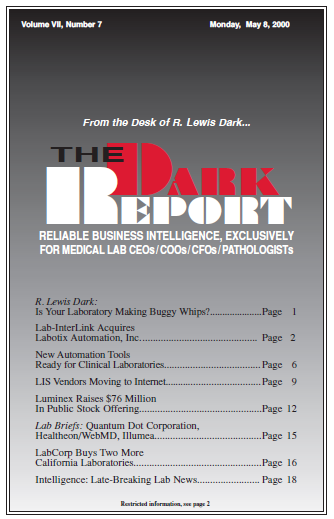CEO SUMMARY: Evidence grows that workstation automation and modular automation can be cost-effective solutions in the clinical laboratory. But the newest generation of automation technology presents lab administrators with a new challenge. Financial analysis and workplace reengineering are now essential skills for success. Lab managers who fail to upgrade their capabilities will find themselves at …
New Automation Tools Ready for Clinical Labs Read More »
To access this post, you must purchase The Dark Report.


